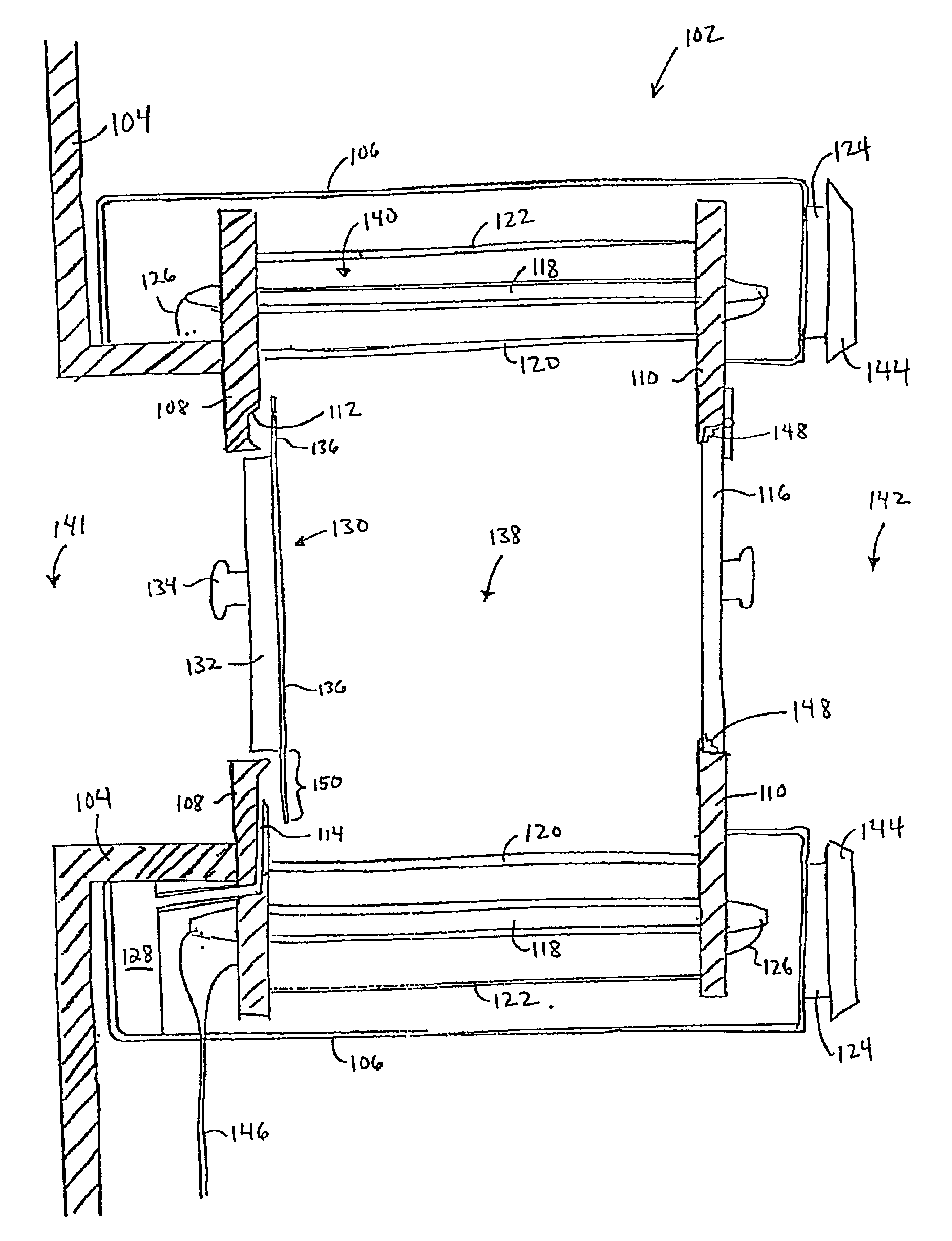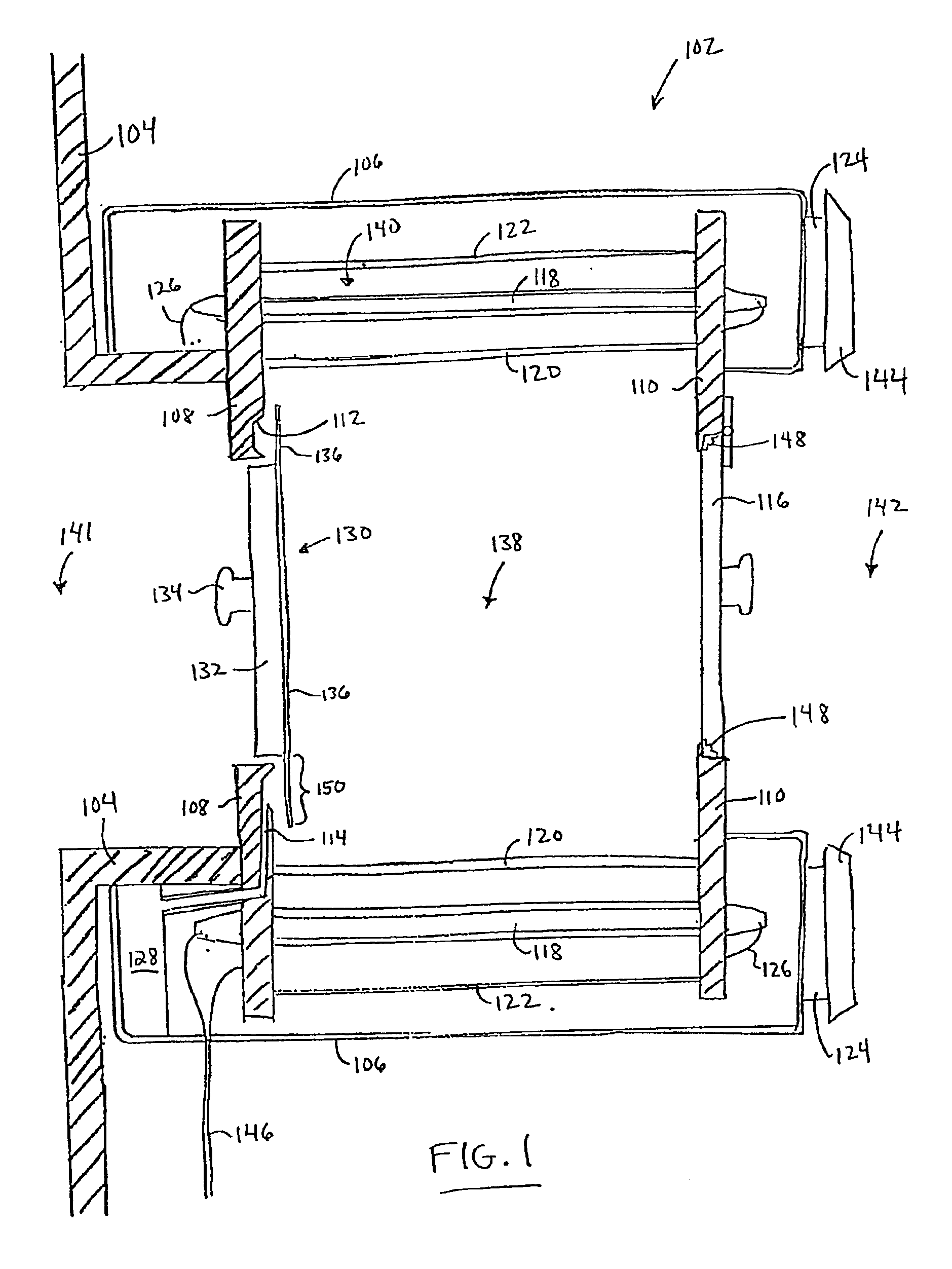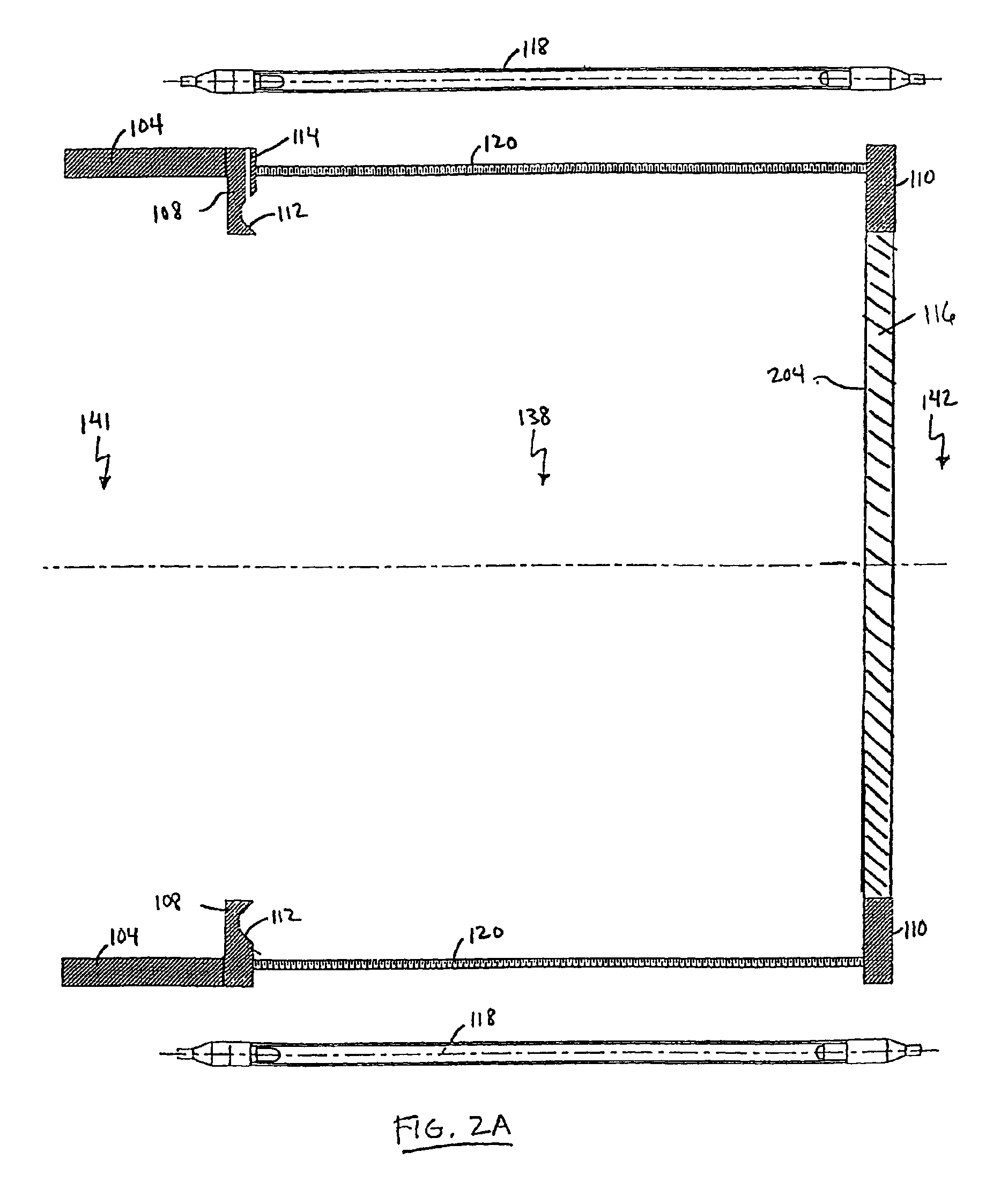Vacuum sterilized sealing of passthrough light treatment devices
a technology of passthrough light and treatment device, which is applied in the field of vacuum sterilized sealing of passthrough light treatment device, can solve the problems of incomplete sealing of the treatment chamber, structural complexity, and inability to sterilize the object and the treatment chamber in such devices, and achieve the effect of simple structure and easy replacemen
- Summary
- Abstract
- Description
- Claims
- Application Information
AI Technical Summary
Benefits of technology
Problems solved by technology
Method used
Image
Examples
Embodiment Construction
The following description of the presently contemplated best mode of practicing the invention is not to be taken in a limiting sense, but is made merely for the purpose of describing the general principles of the invention. The scope of the invention should be determined with reference to the claims.
Referring first to FIG. 1, a cross sectional side view of a passthrough light treatment device integrated with a barrier isolator is shown, wherein the passthrough light treatment device employs a vacuum-sealable hatch to effectuate a sterilized vacuum seal in accordance with one embodiment of the invention. Shown is a passthrough device 102 and isolator walls 104 of an isolation chamber (not shown and also referred to as a barrier isolator). The passthrough device 102 includes an exterior shell 106, a first end wall 108 including a groove 112 and a vacuum port 114 (also referred to as a vacuum inlet 114) both on an interior surface of the first end wall 108, a second end wall 110, a sea...
PUM
 Login to View More
Login to View More Abstract
Description
Claims
Application Information
 Login to View More
Login to View More - R&D
- Intellectual Property
- Life Sciences
- Materials
- Tech Scout
- Unparalleled Data Quality
- Higher Quality Content
- 60% Fewer Hallucinations
Browse by: Latest US Patents, China's latest patents, Technical Efficacy Thesaurus, Application Domain, Technology Topic, Popular Technical Reports.
© 2025 PatSnap. All rights reserved.Legal|Privacy policy|Modern Slavery Act Transparency Statement|Sitemap|About US| Contact US: help@patsnap.com



